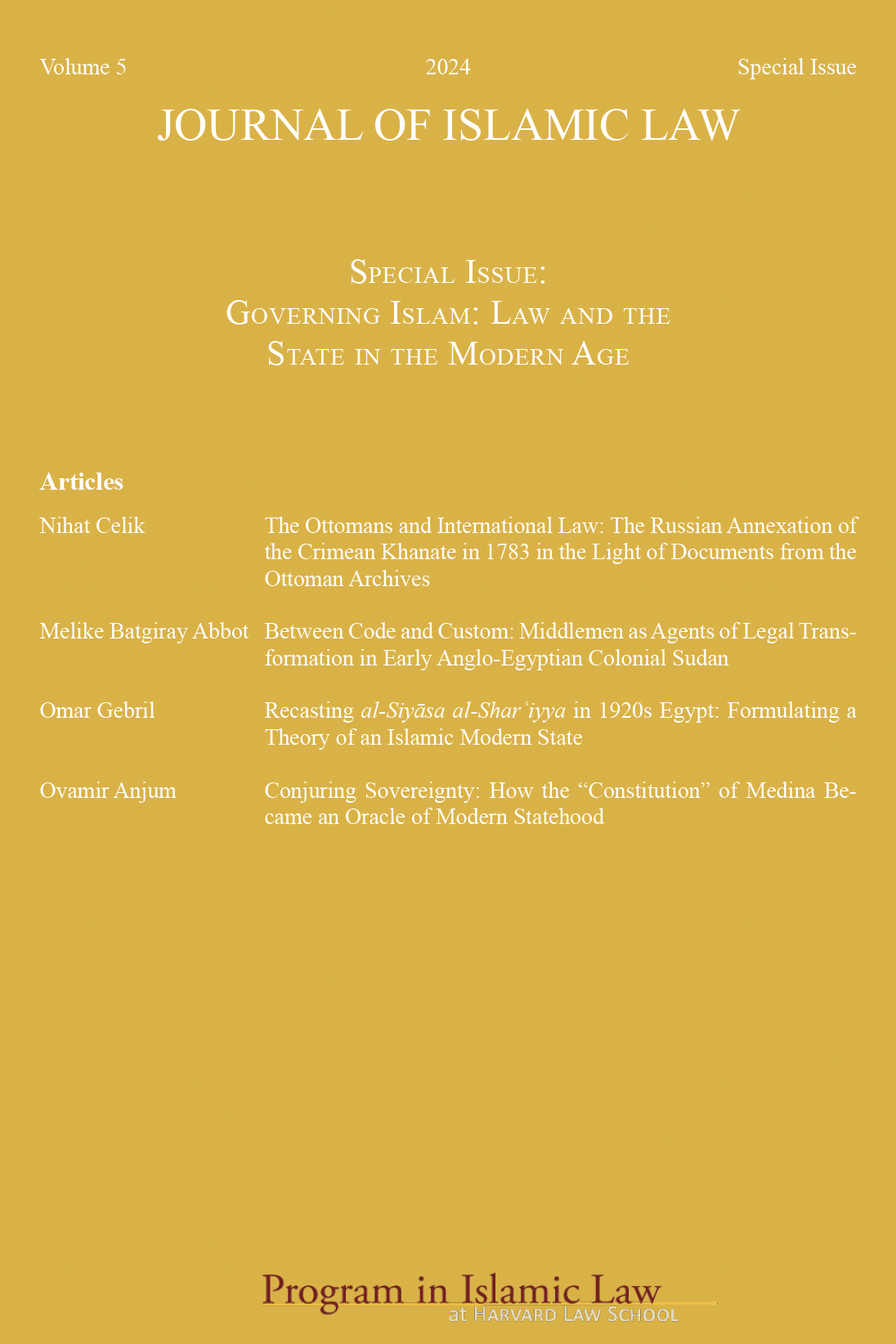Conjuring Sovereignty: How the “Constitution” of Medina became an Oracle of Modern Statehood
Main Article Content
Abstract
Although the legal institutions of postcolonial Egypt and much of the Arab world had been reconstituted along the lines of Napoleonic civil code in the 1940s, Islamic political discourse remained encumbered by claims in which the nation, the umma, was defined by faith rather than territorial boundaries, and lacked a notion of secular citizenship and sovereignty. South Asian scholar Hamidullah’s apologetic recasting of the Ṣaḥīfat al-Madīnā in the 1930s as the “world’s first written constitution” may have handed Egyptian Islamic reformists like the Islamic reformist and lawyer Salim El-Awa the solution to this problem. Wildly successful, El-Awa’s strategically ahistorical reading in Sadat’s Egypt pitted the purportedly liberal Prophetic politics against a constrictive juristic tradition. The resulting discourse made the Ṣaḥīfa available to anyone who wished to get past the structural incompatibility between Islamic politico-legal tradition and the territorially constituted nation-state. Besides disarticulating the relationship between Islamic law and politics, the Ṣaḥīfa may have performed another unintended function. As a treaty that placed no limits on a sovereign’s power, now elevated as the true Islamic constitution that had been obscured by later tradition, it became something of a modern oracle, providing the perfect instrument of legitimation to the modern Arab authoritarian states looking to deploy Islam but to bypass the tradition of Islamic jurisprudence.

